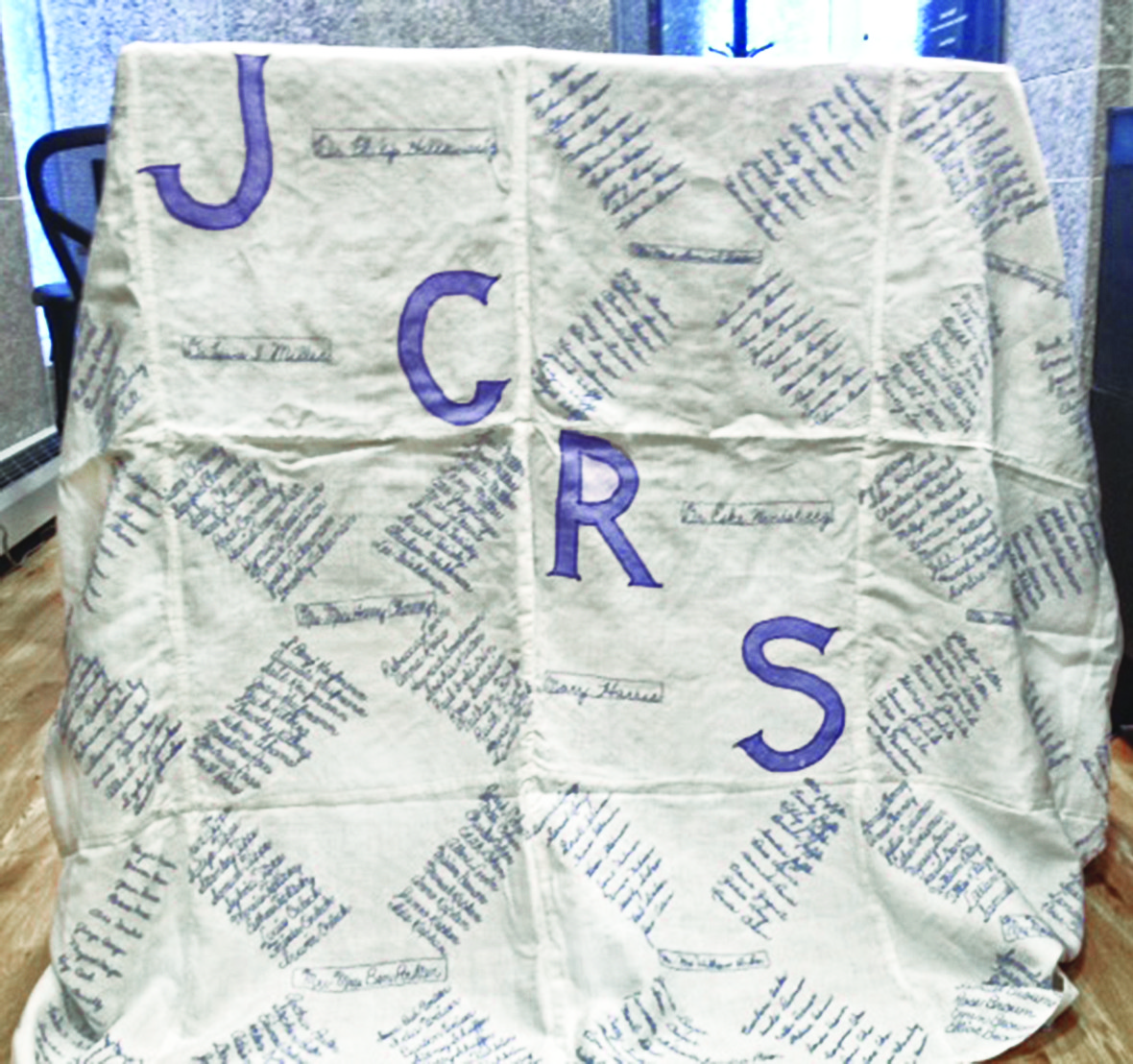The mystery of the three tablecloths
When you move or clean out a closet, you often find things you didn’t expect, or didn’t even know you had (on the other hand, I’m still looking for a 4-by-8 sheet of plywood that went missing in the 1970s!
When cataloging our collection on the new shelves at the Rhode Island Jewish Historical Association, I found a box labeled “RIJHA Tablecloths.” Thinking that these were tablecloths for use at RIJHA meetings (although I had never seen them used), I opened the box, only to find that it held three embroidered cloths.
Since I had no idea what the tablecloths were for or where they came from, I called Anne Sherman, who was the office manager at RIJHA for 25 years. She told me that they were there when she first arrived, and she didn’t know what they were.
We both then turned to our guru, Jerry Foster, who not only writes wonderful articles for The Voice, but also knows about all things Rhode Island.
After telling her that the initials “JCRS” were appliqued on one of the cloths, she told us that it had belonged to the Jewish Consumptive Relief Society. The families had their names put on the fabric as a fundraiser.
The Jewish Consumptive Relief Society, based in Denver, was the second organization to open a sanatorium for Jewish people with tuberculosis. The first, National Jewish, opened its facility in 1899, in Denver, and did not charge patients. However, it did not offer Kosher facilities until around 1920.
The Jewish Consumptive Relief Society was established in 1904 by men from Eastern Europe who had tuberculosis. They hired Dr. Charles Spivak, a Russian immigrant, to run the place. A Talmudic saying, “He who saves one life saves the world,” became its motto. To make the patients feel more at home, which was considered an aid to their healing, there was a Kosher kitchen and the staff understood Yiddish.
The hospital’s therapy was scientific, with patients receiving lots of fresh air and healthy food. For spiritual needs, a synagogue was built in 1911. In addition, there were other medical facilities and even a school and a small business. The patients also put out a monthly magazine, The Sanatorium, with a Yiddish section and articles written by patients.
Over time there were many other sanatoriums, including in California and New Jersey.
The only mention of Rhode Island in connection with Jewish fundraising for tubercular patients is found in a newspaper article on April 9, 1929, which is reproduced on the website of the Jewish Telegraphic Agency (JTA). It states that delegates from many states, including Rhode Island, attended a meeting and voted to fund the expansion of a sanatorium near Lakewood, New Jersey, called Brown Mills in the Pines. However, that sanatorium is not related to the Jewish Consumptive Relief Society, which is so clearly marked on one of the tablecloths.
By 1954, the incidence of tuberculosis was much lower and JCRS’s Denver hospital became the American Medical Center and changed its focus to cancer.
In the RIJHA Notes (13.138), it says that the JCRS tablecloth came from Helene Bernhardt and was made in Cranston; it was used at RIJHA’s Annual Meeting on April 18, 1999. Since that time, it has stayed in its box.
If you or your family have a relationship with the Jewish Consumptive Relief Society, or if you think that your name is embroidered on the tablecloth, please come and see it. While RIJHA will have shortened hours for the next three months, you can make an appointment by calling us at 401-331-1360 or emailing info@rijha.org. Over the next few months, I hope to find out more about our two other tablecloths.
RUTH BREINDEL is president of the Rhode Island Jewish Historical Association.








